Day 20: Dharamsala to Bimthang via Larke Pass
Length: 16.11km
Elevation: 807m
Well, this was the big day. The crux, so to say. Larke pass, the highest point on the trek, and our exit out of Manaslu valley was our challenge this morning. We had all gone to bed by 7, so when the alarms rang at 3:30am, we had a somewhat decent sleep. It was quite easy to fall asleep at 7 too, as everyone is so exhausted.
Most hikers here have just done the Manaslu circuit. Curtis, our friend from Ottawa, remarked he was on Day 9 of his journey. He chose a much shorter route to the pass, as did most. But everyone was in a state of excitement and exhaustion, as much as people did not like to admit it.
Our stomachs were not feeling much for breakfast, which is common at these altitudes. But we did our best, and departed by 4:30 in the pitch black. Shubus and most of the other porters all left in a group 20-30 minutes before we did. The less time at this altitude with the weight on their back, the better. And they sure are not the slow ones in a party. We left in the middle of the pack trekkers wise, some half an hour before, some half an hour after.
So its dark, and were step by step moving up the rocks to higher elevation. The night, most fortunately, was completely clear and somewhat warm (-5C maybe?). We hadn’t expected this after the fog roll in the night before, but we would take it. The moon illuminated all of the Larkye mountains ahead of us, and Nike and friends behind. It was a serene morning. We passed our 81 year old monk friend early on. He was struggling immensely. Very slow.


The darkness didn’t last long. The sun rises very early at high elevation. And we could start to see the hints of blue in the sky, and the mountains illuminated by the mere idea of rays. The greyscale night turned to full colour, and Cam and I got very enthused. We got a burst of energy, and despite Hari’s pleas to slow down, we were galivanting up the path, stopping to take photos, and moving on, passing most ahead in the process.



The path to start the hike followed the bottom of a small valley, between a hill to our right and a glacial debris pile to our left. I spent a good time walking along the top of the debris pile, stepping over rocks, shrubs and juniper. The view wasn’t much different from above the glacial debris, as there was much more debris towards the mountains.
The mountains. It was a masterpiece of nature to our left. Behind the glacial tongue and all the rocks that comes with it, lie the Larke mountains. There are three main peaks to this range, with the tallest standing 6400m high, tucked behind the other two. The moon was perfectly placed above these peaks, and there was no atmospheric distraction anywhere to be seen.







Eventually the glacial tongue turns into a glacier, and the paths change somewhat. Over 4800m now, what lay ahead of us was a legacy of glacial presence. All sorts of rocks and boulders were casually tossed along a large plain, slowly ascending towards Larke pass. There was an official path, but it wasn’t much better than just rock hopping on your own. So we bumbled along, slowly getting higher, being careful not to fall or slip, and made our way to the pass.



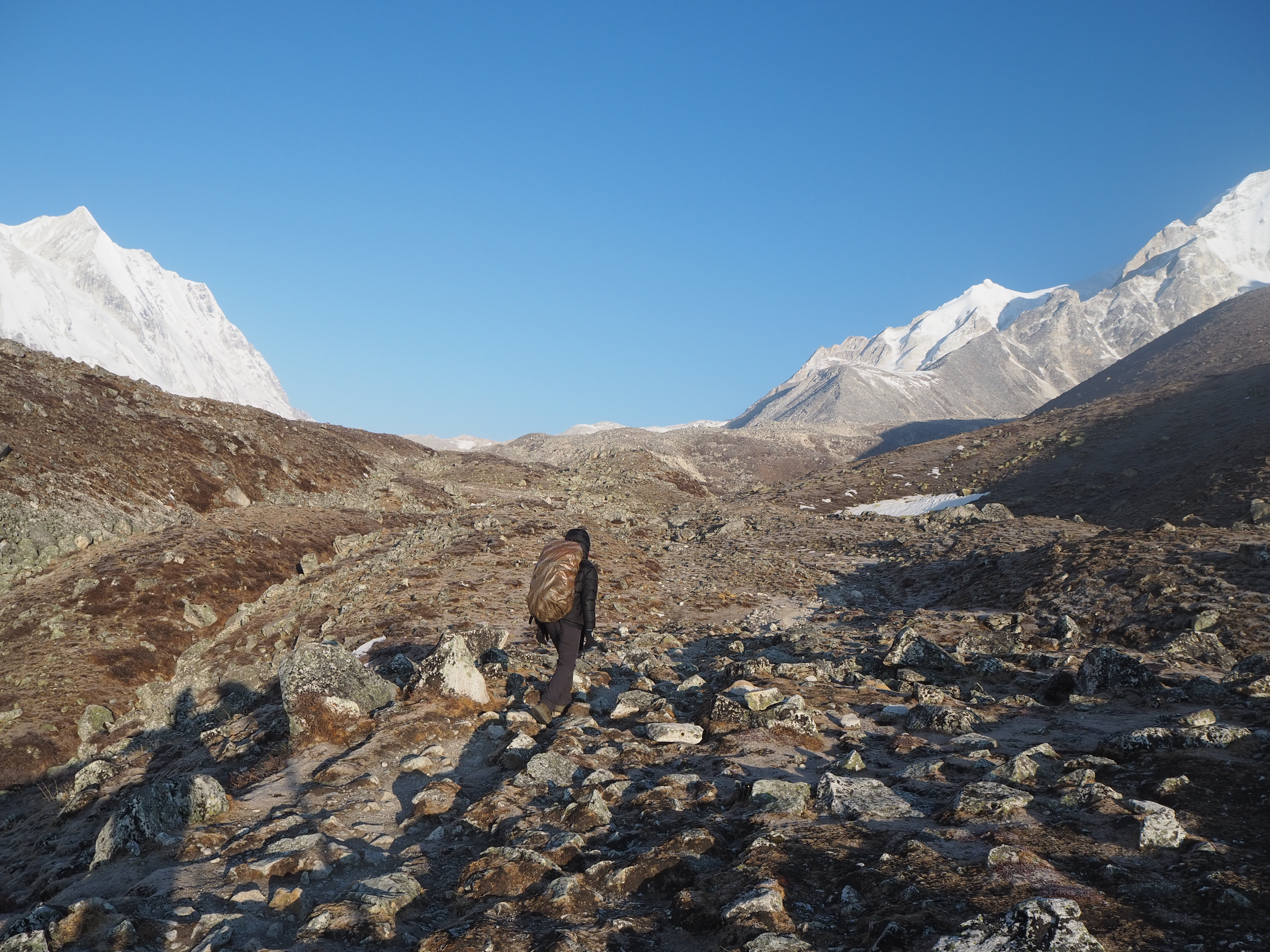






The sun was up at this point. We turned around frequently to watch the Manaslu valley mountains disappear behind the mess of rocks. Ahead is only more rocks, until it isn’t. Like it peeked around a corner, the sign for Larke pass, and the prayer flags to go with it, appeared out of nowhere. And we had made it.
The top was lovely. Shubus and all the rest of the porters were there hanging out. We were some of the first to arrive on the scene, but many, like Curtis, followed quickly. It was a vibrant and joyous scene at the top. People all celebrating, hugging, taking pictures. Even the Dharamsala husky was up here, coming up to every new hiker to say hi.






Juse because you’ve made it up, doesn’t mean you’ve made it down. And while we were halfway in our distance for the day, we were not close to halfway in our elevtion. We had a lot of down to get off the mountain safely. So with the sun finally starting to melt the ice and snow, we made our way down.
We didn’t make it far before we got our first full sight of the Annapurnna massif. In front of us were some medium sized mountains by Himalayan standards, but massive ones anywhere else. With our high vantage point, we could see this entire new valley in front of us. Barely snowcapped peaks encircled two glacier tongues, with a small lake in the middle. These were impressive peaks, as they steeply rose from the ice below them.
With that view and the high from the pass fueling us, we began our long, technical descent to Bimthang. The combination of rocks, snow and barely melted ice made it tricky. Shubus and the porter gang were well ahead, making this decent look simple. But for us, not so much. Careful placement of feet for hundreds of metres down.
The path eneded up in another side glacier valley, hills and mountains to one side, glacier debris to the other. The peaks mostly ended up hiding behind all the rock. The juniper was back, which always adds a nice smell to mask our muskiness. We just plunked down the hill, quickly getting more and more tired.
We passed about 20 or so Nepali men carrying overfilled duffels and baskets up the hill, to the pass. Confused, Hari enquired. Someone wanted to climb Larke peak, and this was all of the supplies needed for that expedition. Multiple tents and sleeping bags for the camps, food, pots, pans, everything. It was wild to see just how much is needed for mountaineering this remotely.
A lunch spot with some views came to our arrival, and we stopped for some tea. Again, we were some of the first here, and the only ones who didn’t stay for lunch. So we left as the head of the pack over Larke.





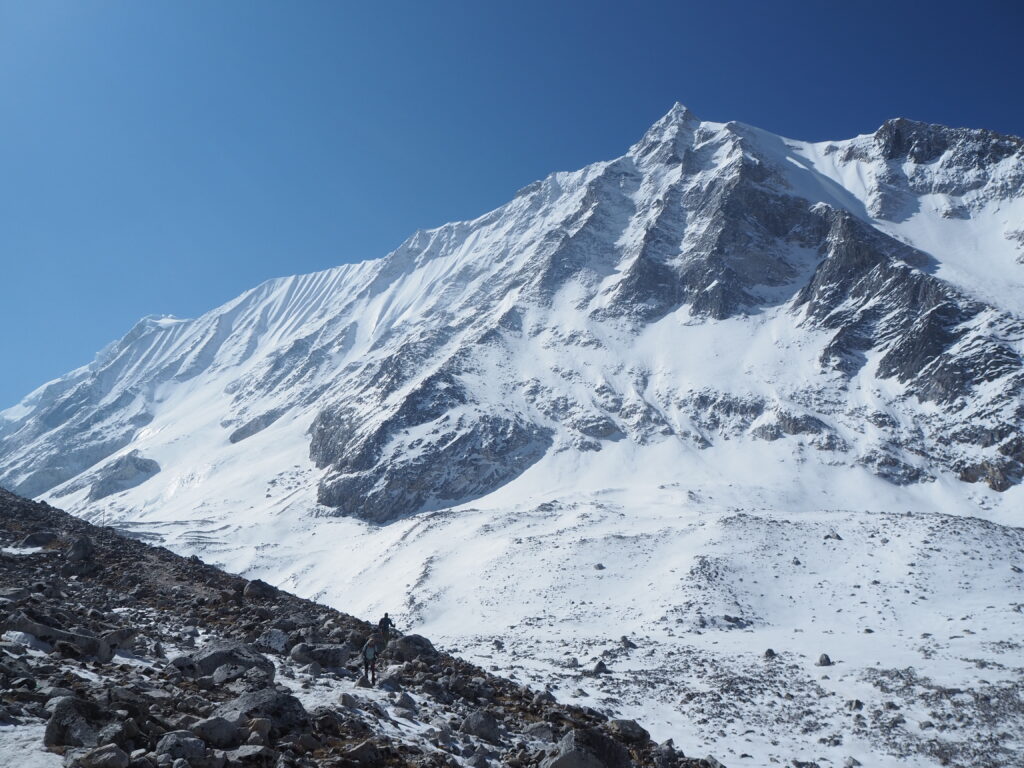

The last section of the day dragged on. Cams stomach was acting up again,a dn we were tired of thinking about where to place our feet. Our knees were working overtime at this point. So we lumbered on, not really sure when Bimthang was going to show up. But inevitably, it would. And with it, likely the best mountain view we could see on the trip.
Right in front of us, dwarfing Bimthang, was the largest mountainscape we have ever seen. Manaslu poked its head through again on our far left, looking taller and more impressive than we have ever seen before. But centered on Bimthang were peaks covered in clouds, taking up most of our horizon. This was the massive size of the Himalayas in front of us.
The view gave us motivation, as well as the impressive mountains. We met Bizo, a Taiwanese trekker coming down from a day hike to the centre lake (Pokker lake). We chatted about Canada, as he worked a year as a dishwasher in Jasper some years back, and about trekking in general. The conversation didn’t last long, he had more km to go, but it was quite nice. He was shocked we were up at 3:30.
Bimthang appears like a fairly modern development in the now Annapurna region. Most structures are made of wood and painted. It likely serves the region as a gatway to Larke pass and other adventuring. But it was in a great place for us, to get some wonderful rest, a really delicious lunch, and some downtime before a massive final day.
Day 21: Bimthang to Dharapani
Length: 23.3km
Elevation: 460m
So we had a nice sleep in Bimthang. We were early to depart. Shubus made friends with some other porters, so they all departed earlier than everyone else. We started our walk down not too long after.
We were feeling energized and excited to start. We would finish our trekking. We were one day away from hot showers and private bathrooms in Pokhora. It was bittersweet saying goodbye to the mountains, but we were ready for some modern luxuries. The path for the whole day was a fairly straightforward, wide gentle downhill sloped path.








The start of the trek was alike a greatest hits montage of the last 3 weeks. The skies were brilliantly clear once again, with Manaslu on display. We turned a corner somewhere, and ended up back in the pine and rhododendron forests, the snowcapped giants now in their final hibernation behind other smaller peaks. Moving through the forest we were on our last lookout for the Red Panda, but spotting the shy creature was just an impossible dream.













We did however spot many other creatures. There were cows and donkeys moving through the forest to Bimthang. There was a herd of at least 100 goats chilling in the forest. Hari had fun with them, bleating himself. This caused a bit of an echo effect, and soon all the goats were chiming in with their own ear grating bleat. The chorus was technically not a pretty noise, but it was quite funny.
We passed the goats, and the goats passed us back at our rest rest stop, only to join us. We then left them behind, and made our way down the trail, past the rhododendrons, through the trees, and across some creeks, hopping rocks over them.
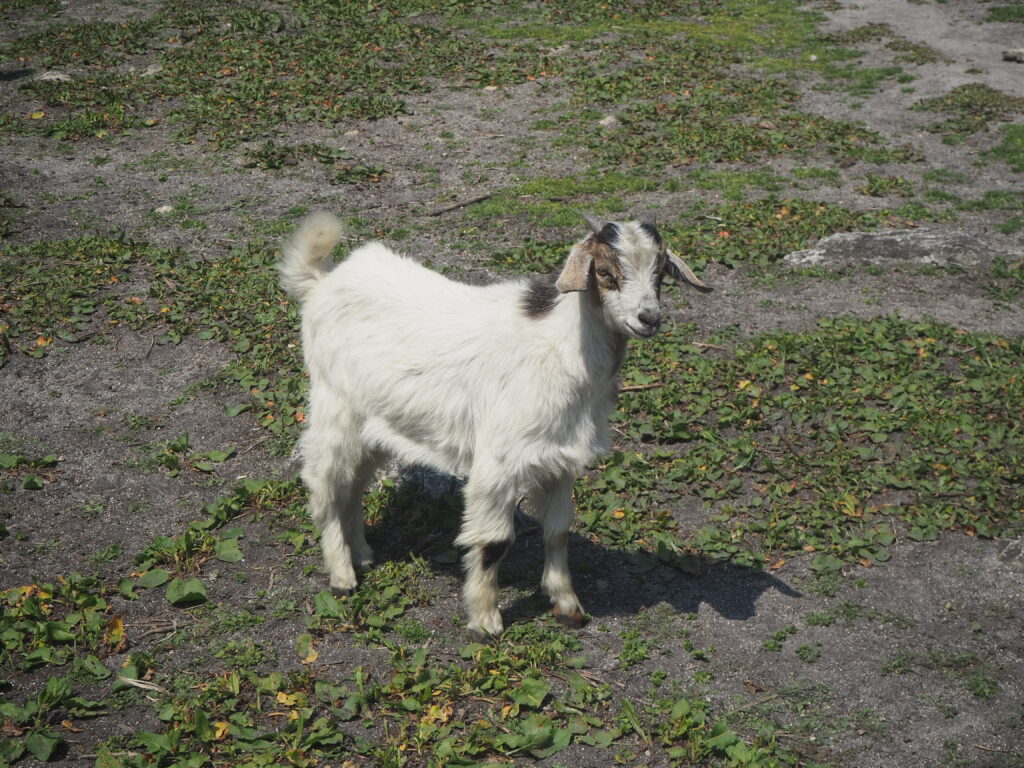
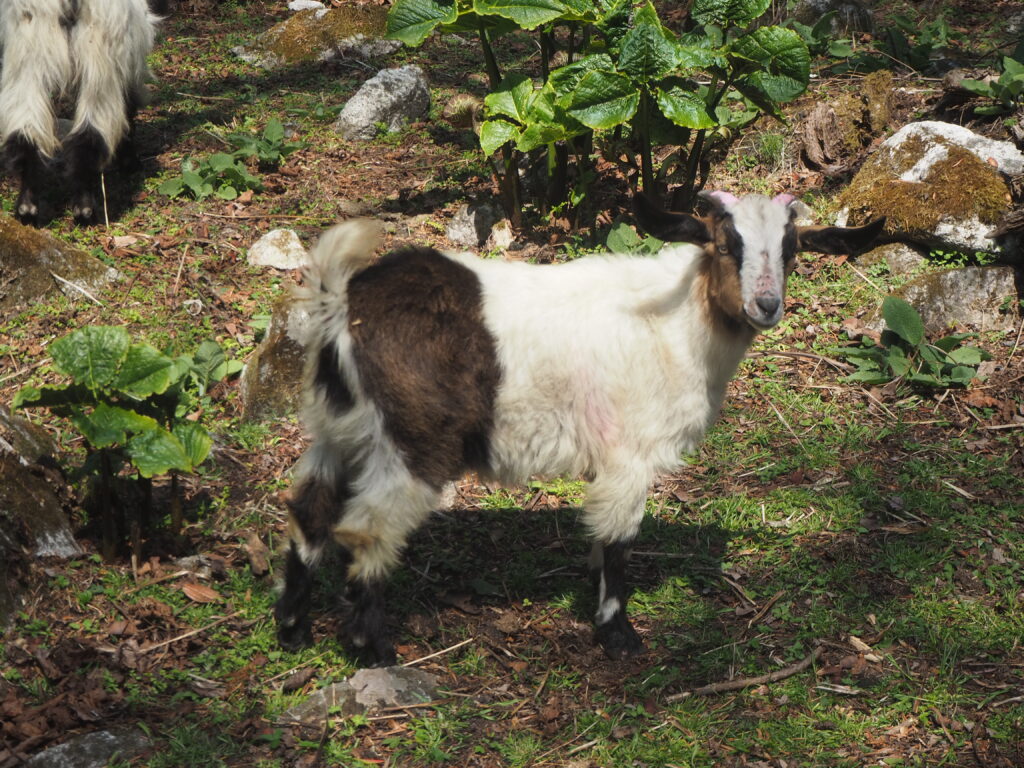
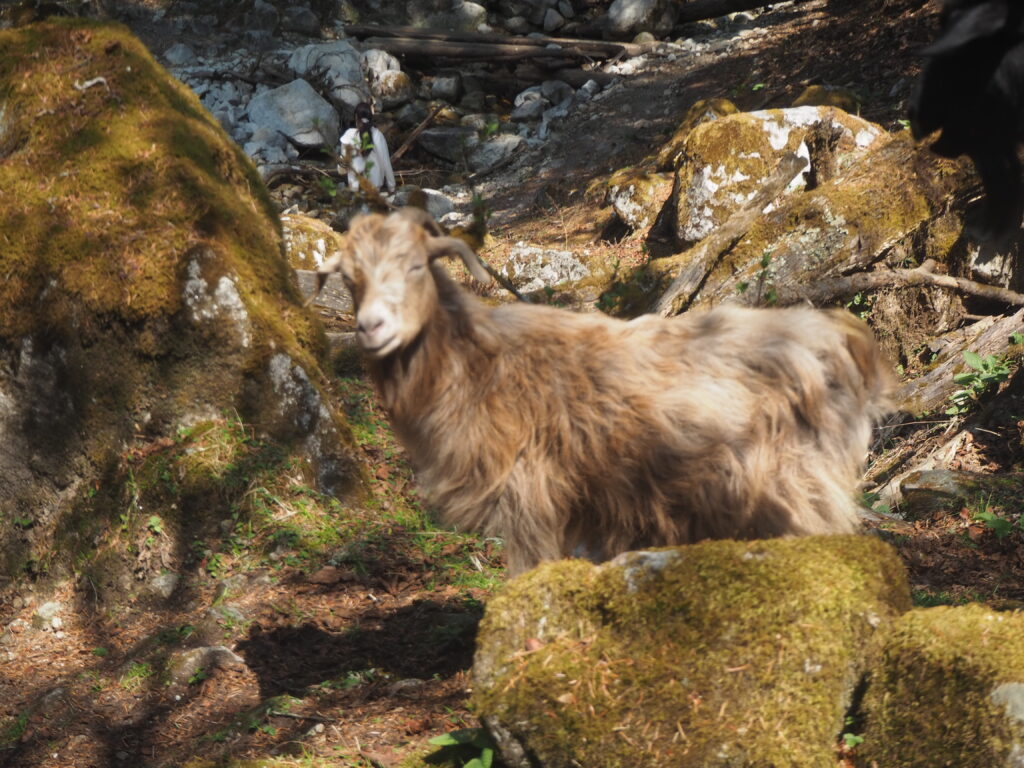




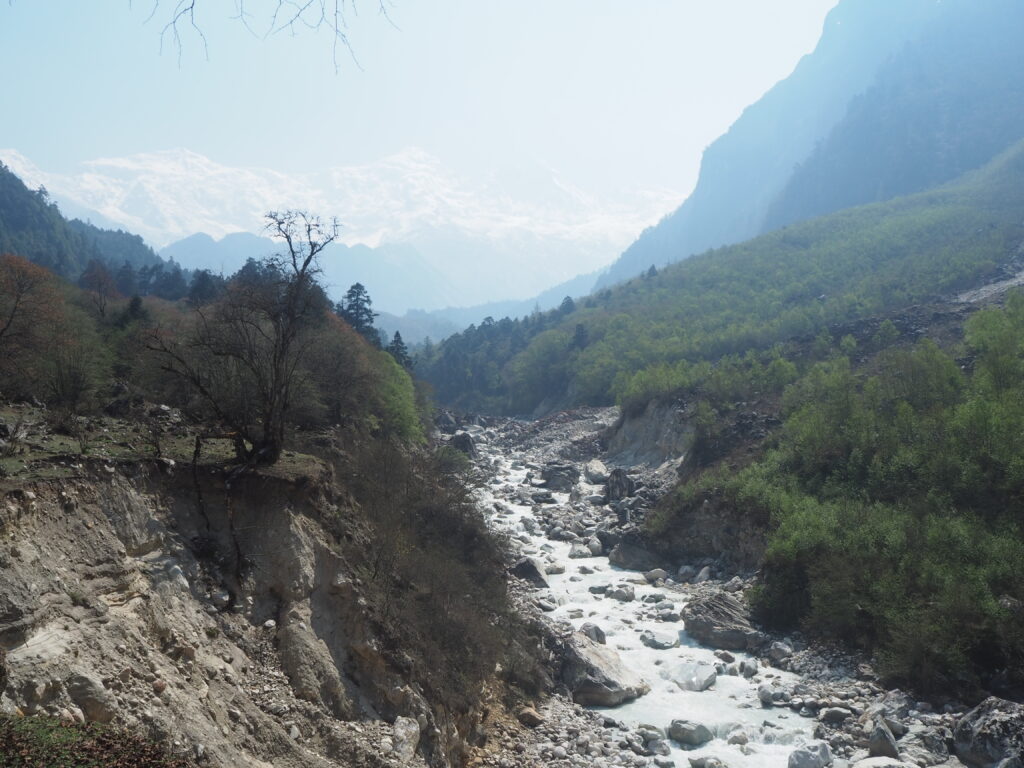
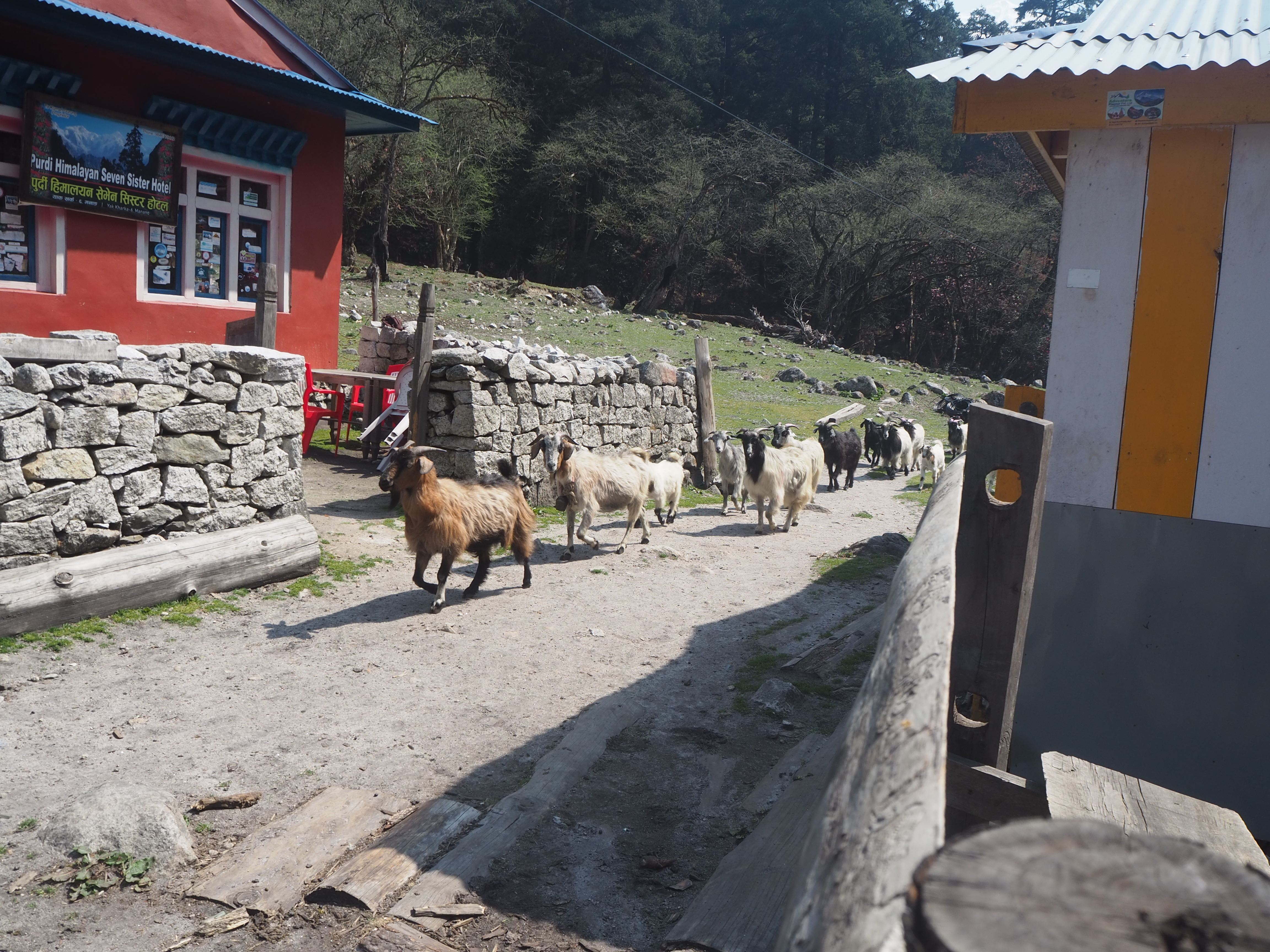



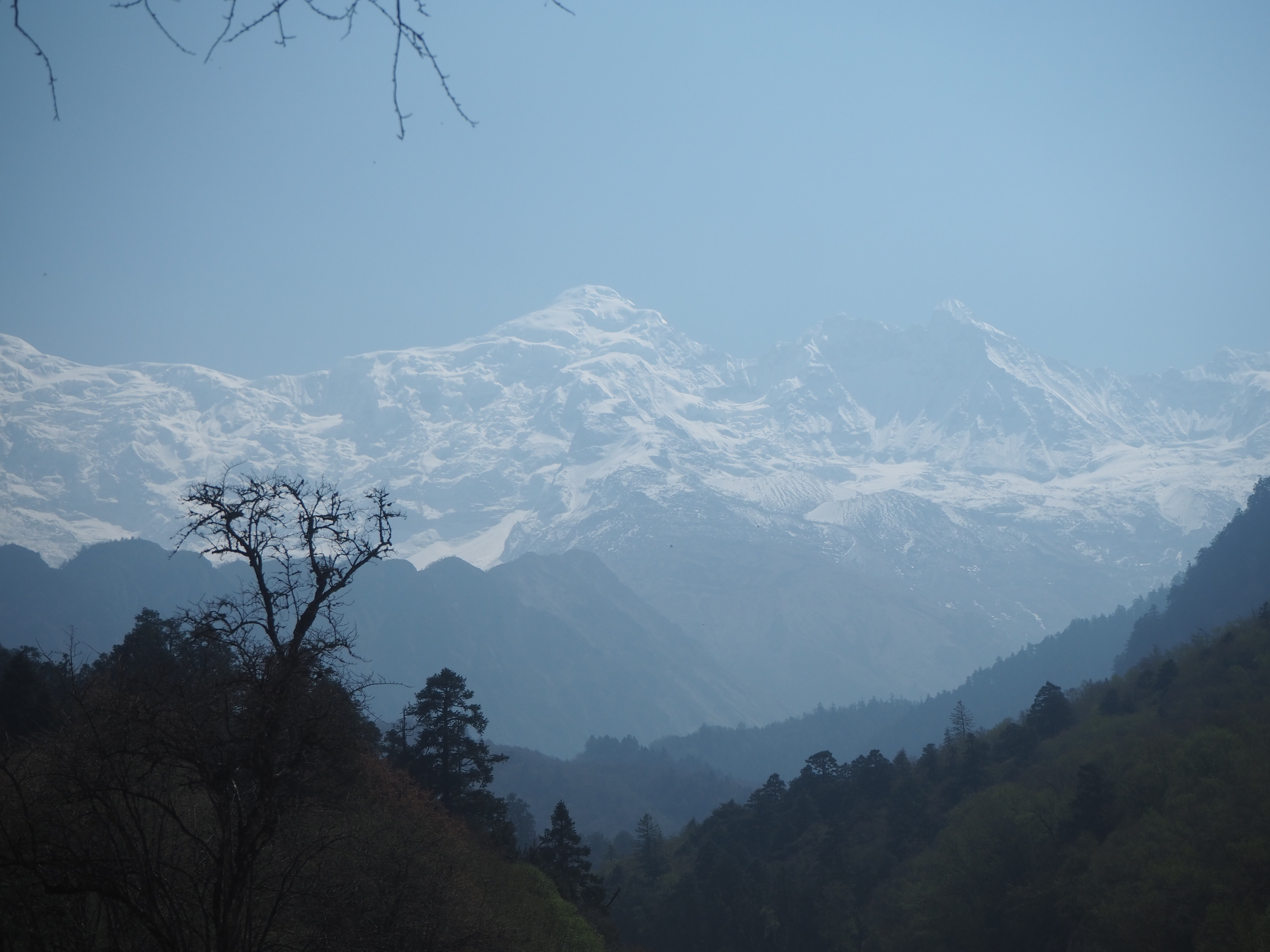
Eventually we started following a road about halfway through. The road up this valley ends at Shyar Khola, which isn’t much of a town. There’s probably plans to make it go to Bimthang in the future, the path wouldn’t be too difficult.
We only had one uphill, and that reminded us how sore and exhausted we were. Our legs ached with each step. Gentle downhill is quite easy. Any up, not so much.
Eventually we moved away from the rhododendron forests, and into the next biome of steep river valley canyon. We didn’t do much for breaks, except a nice lunch in Gowa for an hour. We wanted Dharapani, we wanted to be done. The canyons were quite special to see again. It had been a while since we have seen the sharp walls. Smoke entered the picture, much to our disdain.
















Dharapani finally came into view, and that’s when disaster struck. For the first time all hike, within the last hour, I got the first and only blister that mattered. My heel acted up, and I hobbled down with one foot in a virtual high heel. It didn’t take too long to get used to my new gait, but it was somewhat annoying.
Dharapani and its neighboring towns sit at a confluence of rivers, the one from Lakye that we have been following, and the Annapurna Valley river. It’s one of the main departure points for the Annapurna trek. We were on the wrong side of the Annapurna river though, and the main town bridge had been washed out by a flood the year prior. We hobbled down to the river, crossed via some stones and a locally made unsecured temporary wooden bridge. Nothing we haven’t done before.
Finally in Dharapani, and we could see all sorts of Annapurna hikers who started downstream finish their first or second day. Fresh spring in their eyes, unprepared for the trials ahead of them. Annapurna is much more popular, and there are many more resources for the traveller should they need it. But Hari splurged for us. Our final room night had a private bathroom, and the hotel had a free hot shower! We didn’t have to wait for Pokhara to be clean. Just for clean clothes.



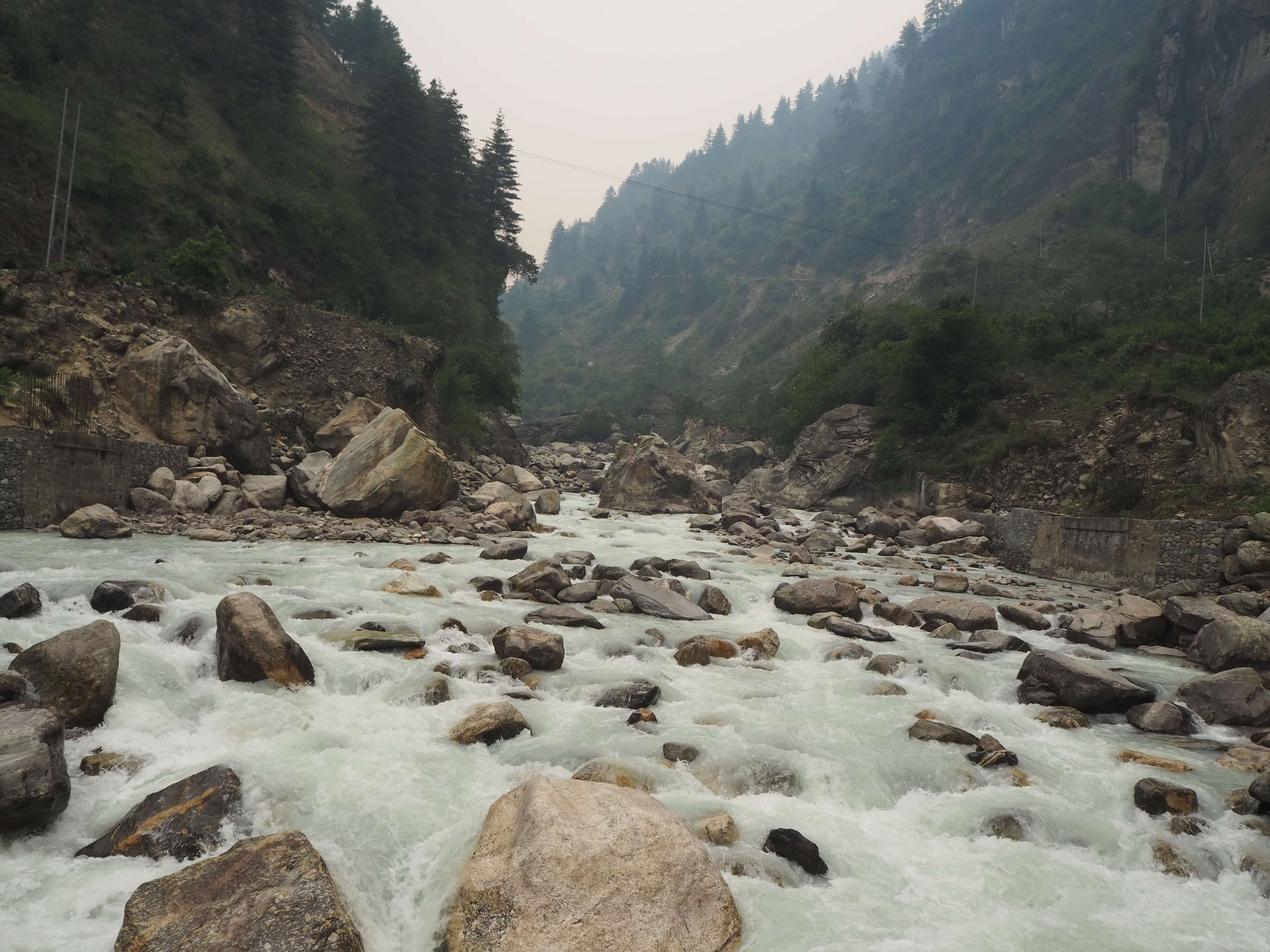






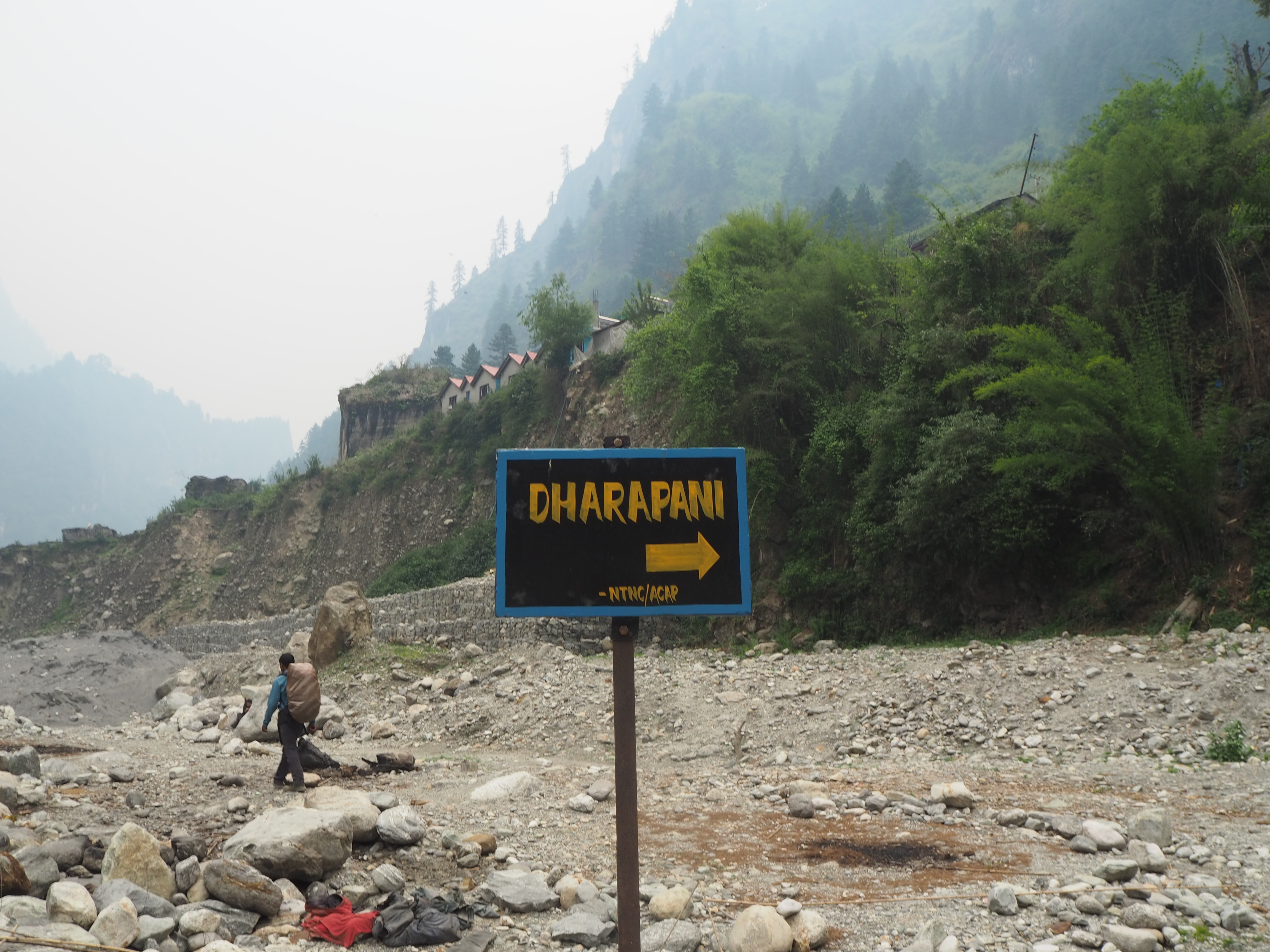

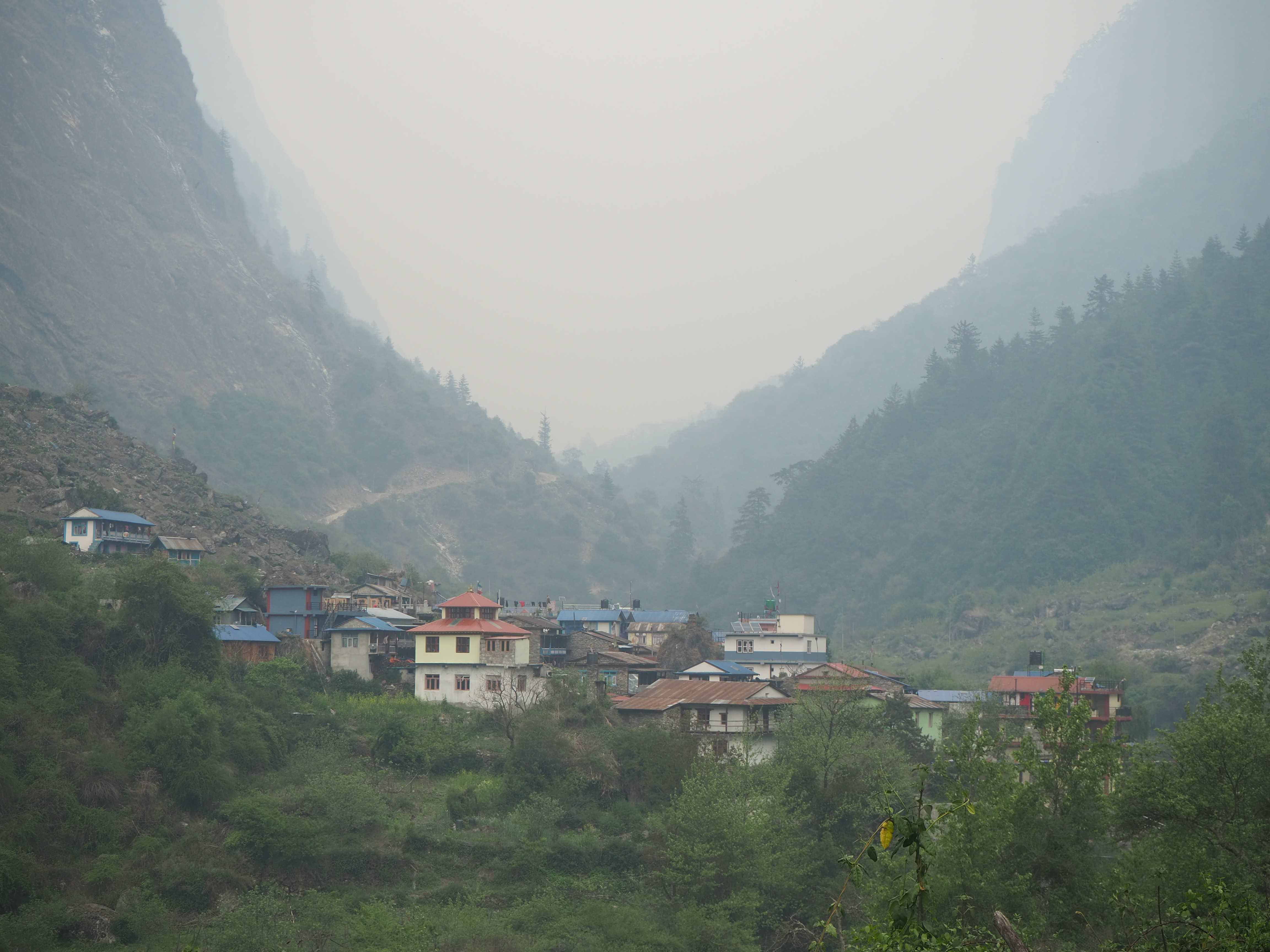

Dinner was nice, and we ell asleep early.
Day 22: Out of Manaslu
Length: 23.3km
Elevation: 460m
Getting out to Pokhara was easy enough. We took a jeep for a few hours to Behisashar, and the road wasn’t too bad (compared to getting into Manaslu). We stopped at a nice waterfall for a bit too. It was a steep mountain road sure, but there were good chuinks of concrete to drive on, reducing the back and forth sway.
Lunch was in Behisashar, and then it was another van to Pokhara. This took a while. The main highway in Nepal, which we would take, is in the process of being rebuilt, and doubled in the process. So the construction and narrow passing delayed us a couple hours. But we made it in the end, said goodbye to Hari and Shubus, and got to relax in the smoky Pokhara region.
Epilogue
There’s so much to say, and nothing to say at all. The Manaslu valley, and the regions around it, are simply a magical place in the world. The beauty and spirituality was unparalleled to anything we had experienced before. If only everyone could be so lucky.

This is your life!!!! What a remarkable journey to see those mountains with your precious eyes and carry these wonderful memories. The photo of Cam is so precious. Thank you for sharing this story and the photographs.